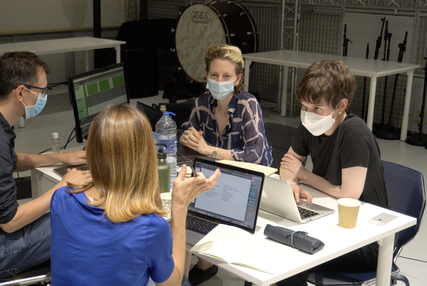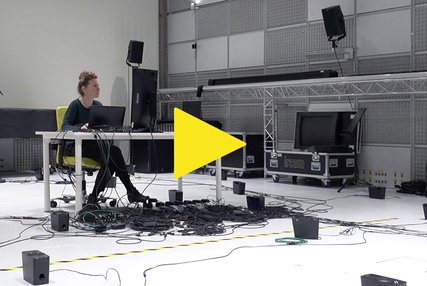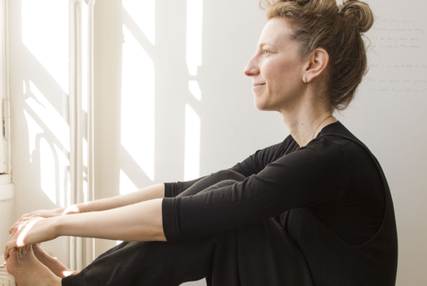Like Sound, Like Flesh
Le 21 janvier prochain, à l’Opéra de Lille, l’Ensemble Le Balcon crée Like flesh, premier opéra de Sivan Eldar sur un livret de Cordelia Lynn d’après Ovide. Un ouvrage dans le cadre duquel la compositrice israélienne prolonge ses travaux d’informatique musicale initiés à l’Ircam autour de la voix et de la diffusion sonore, entourée et secondée pour l’occasion d’une équipe de pointe, composée de Florent Derex, responsable de la projection sonore et membre fondateur du Balcon, Augustin Muller, réalisateur en informatique musicale Ircam et RIM de l’ensemble depuis ses premiers concerts en 2008, et Koré Préaud, ingénieure du son associée à l’Ircam qui assiste Augustin Muller sur le projet. Au fil de cet entretien à bâtons rompus, les trois complices nous donnent à voir les coulisses du son.
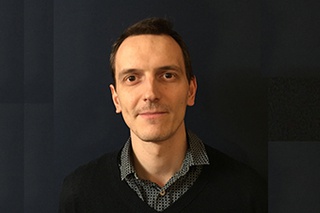
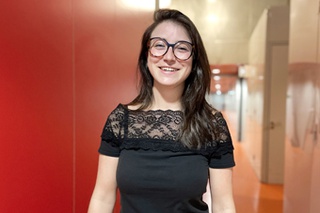
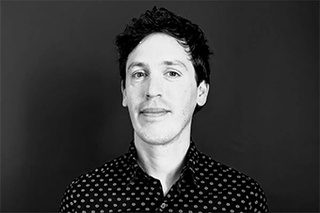
De gauche à droite, Augustin Muller, réalisateur en informatique musicale Ircam et RIM, Koré Préaud, ingénieure du son à l'Ircam et Florent Derex responsable de la projection sonore et membre fondateur du Balcon
![]()
Pensez-vous que le travail de diffusion sonore du Balcon, qui relève de l’ADN de l’ensemble, a pu jouer un rôle dans le désir de Sivan Eldar de vous confier la création de son opéra ?
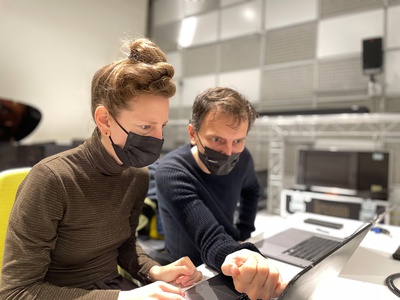 Augustin Muller : Certainement, mais c’est aussi une affaire de rencontres : personnellement, j’avais déjà travaillé avec Sivan à l’Ircam sur Heave, pour le chœur Exaudi, créé à Royaumont en 2018. Et Le Balcon est un partenaire fidèle de l’Opéra de Lille, qui est le commanditaire de Like Flesh : la rencontre faisait donc sens, avec des habitudes communes de travail et d’écoute.
Augustin Muller : Certainement, mais c’est aussi une affaire de rencontres : personnellement, j’avais déjà travaillé avec Sivan à l’Ircam sur Heave, pour le chœur Exaudi, créé à Royaumont en 2018. Et Le Balcon est un partenaire fidèle de l’Opéra de Lille, qui est le commanditaire de Like Flesh : la rencontre faisait donc sens, avec des habitudes communes de travail et d’écoute.
Florent Derex : J’ai le souvenir d’une très longue discussion avec Sivan à l’issue d’une représentation de l’opéra Donnerstag aus Licht de Karlheinz Stockhausen qu’elle était venue voir à l’Opéra Comique. Nous avions échangé sur les enjeux performatifs de la sonorisation, sur son évolution depuis les années 1980 dans le cadre de la musique écrite, ainsi que sur le rôle quasi mystique des bandes électroniques des actes I et III appelés « chœurs invisibles » et qui nous faisaient penser à la musique sacrée d’église qu’on entend, qui nous entoure, mais qu’on ne voit pas. Peut-être y a-t-elle trouvé un écho au travail qu’elle menait alors avec Augustin sur Heave.
Sivan Eldar avait-elle une idée précise en tête quant à l’électronique et la diffusion sonore de son opéra ?
F.D. : Une des inspirations principales de Like Flesh est les Métamorphoses d’Ovide et Sivan nous a souvent parlé de sa relation très organique au son, quasi vivant, grouillant. Mais votre question aborde de fait une problématique essentielle de l’écriture en musique mixte qui est la relation compositeur / réalisateur en informatique musicale. De mon point de vue et du point de vue du Balcon, les idées musicales précédant le travail d’écriture de l’électronique se tissent lors d’échanges entre un compositeur et un RIM (parfois même un directeur musical), et s’écrivent finalement à plusieurs. Je rejette totalement le point de vue consistant à avoir d’un côté une idée artistique globale, un concept, et de l’autre sa mise en pratique.
Concernant la diffusion sonore, elle se dissocie en deux dispositifs parallèles : le premier relatif à l’électronique — c’est le domaine d’Augustin — et l’autre, plus en lien avec l’orchestre — qui m’occupe plus particulièrement. Il se trouve que pour cet opéra, ce sont en pratique deux dispositifs physiques distincts. L’enjeu a été de définir la relation entre ces deux dispositifs — et cette réflexion se poursuivra jusqu’au travail au plateau avec la metteuse en scène Silvia Costa.
A.M. : Concernant la diffusion de l’électronique, le travail sur Like Flesh est une continuation directe de celui que Sivan et moi-même avons réalisé pour Heave. Cette pièce avait pour contrainte première d’être diffusée dans les jardins de l’Abbaye de Royaumont via un dispositif déjà en place : un réseau de haut-parleurs enterrés qui avait été imaginé par Manuel Poletti pour Carré Magique, une installation de Jean-Luc Hervé.
Tout comme Like Flesh, Heave s’appuyait déjà sur un livret de Cordelia Lynn et l’un des thèmes principaux de la pièce était le lien biologique du corps au végétal, à la terre, et notamment aux champignons. Nous avons beaucoup échangé avec Sivan sur des images et des comportements dynamiques de végétaux. Il nous est rapidement apparu qu’on pouvait suggérer un monde étrange et saisissant à partir de sons qui, venant du sol, s’élèveraient progressivement.
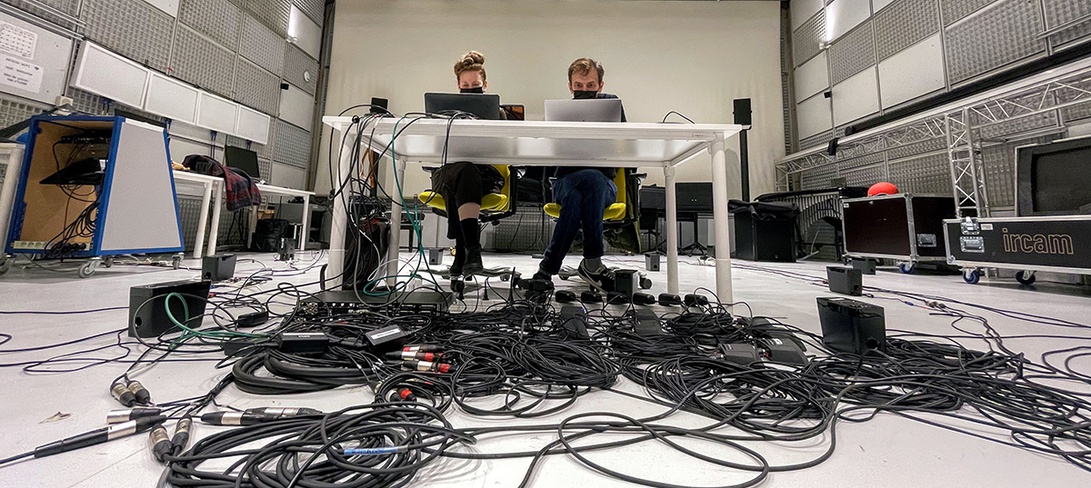 Séance de travail à l'Ircam entre Sivan Eldar et Augustin Muller, novembre 2021 © Ircam - Centre Pompidou, photo : Déborah Lopatin
Séance de travail à l'Ircam entre Sivan Eldar et Augustin Muller, novembre 2021 © Ircam - Centre Pompidou, photo : Déborah Lopatin
De mon côté, j’avais déjà fait quelques expériences de « synthèse spatiale », c’est-à-dire générer ou modifier un son électronique en tenant compte des paramètres d’espace. Nous nous sommes ainsi dirigés progressivement vers un système de diffusion « distribué », intimement lié à une méthode de synthèse sonore particulière : Sivan a enregistré et sélectionné une multitude de petits grains sonores élémentaires que nous avons mis en jeu grâce à un système informatique que j’ai élaboré à partir du langage Antescofo (développé à l’Ircam par Jean-Louis Giavitto). Nous pouvons ainsi animer des mouvements, des formes, des surfaces sonores peuplées de ces grains, qui tissent des toiles polyphoniques et complexes, destinées à ce dispositif de diffusion particulier, mais nous pouvons aussi nous intéresser à un ou plusieurs points du dispositif en particulier pour donner à l’auditeur accès à l’individualité au sein du collectif.
Ce système nous est apparu comme tout à fait indiqué pour Like Flesh, les univers étant très proches, dans leurs évocations du monde végétal et leurs transformations de l’espace d’écoute.
Quel rôle dramaturgique pour ces dispositifs de diffusion ?
A.M. : Sans vouloir dévoiler le contenu de Like Flesh, la partie électronique sous-tend de grandes parties de l’opéra. À partir du matériau généré ensemble en studio, Sivan a composé par montage des bandes électroniques soutenant le discours vocal. Évidemment, l’électronique, en tant que son provenant de nulle part et de partout, permet de changer la qualité acoustique du lieu ou, en tout cas, son écoute. L’électronique, tout comme l’instrumental du reste, relèvent parfois davantage du décor sonore, au sens où ils modifient les perceptions scéniques, au même titre que la lumière par exemple. Ce dernier usage de l’électronique est un terrain d’expérience personnel et du Balcon depuis de nombreuses années !
Comment s’est passée l’élaboration de ces dispositifs ? Quelles ont été les pistes explorées ?
A.M. : Après la création de Heave à Royaumont, nous avons fait des tests avec les haut-parleurs, d’abord au Théâtre de l’Athénée, puis à l’Opéra de Lille. Nous nous sommes un moment posés la question de haut-parleurs sans fil, que l’on pourrait placer « n’importe où », mais cette idée n’a finalement pas été retenue.
Koré Préaud : Arrivée dans le projet à l’été 2021, j’ai pu, à plusieurs reprises, mettre en place un système réduit s’approchant au plus possible de ce qu’il y aurait à l’Opéra de Lille — système qui sert à toutes les expériences de Sivan et Augustin en studio. En juillet 2021, nous avons réalisé un premier test grandeur nature, en installant une trentaine d’enceintes dans le parterre de l’Opéra de Lille. Ce test in-situ avait plusieurs objectifs : d’abord, s’assurer que le système fonctionne — et découvrir les prémisses de cette spatialisation macroscopique fut d’ailleurs une très belle expérience —, ajuster ensuite les plans synoptiques, schémas et constructions de racks, et, enfin, évaluer l’ampleur technique de sa mise en place.
Conclusion : nous avons décidé de rajouter plus d’enceintes encore !
Finalement, quels seront les dispositifs effectivement retenus ?
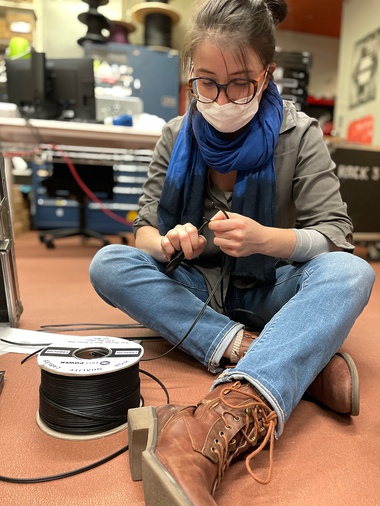 K.P. : Pour la diffusion de l’électronique, nous avons donc 56 enceintes réparties de manière homogène au sol, au milieu du public. 37 petites enceintes forment le maillage au parterre, renforcées par une « couronne » de 8 enceintes plus généreuse dans les graves. 9 enceintes sont placées en courbe au balcon pour donner un sentiment de hauteur. Cachés aux yeux du public à jardin et à cour, deux racks pré-câblés en amont complètent l’ensemble.
K.P. : Pour la diffusion de l’électronique, nous avons donc 56 enceintes réparties de manière homogène au sol, au milieu du public. 37 petites enceintes forment le maillage au parterre, renforcées par une « couronne » de 8 enceintes plus généreuse dans les graves. 9 enceintes sont placées en courbe au balcon pour donner un sentiment de hauteur. Cachés aux yeux du public à jardin et à cour, deux racks pré-câblés en amont complètent l’ensemble.
F.D. : Concernant la partie sonorisation, nous travaillons avec un dispositif appelé WFS, capable de restituer des champs acoustiques. Ces dispositifs se matérialisent par des lignes d’enceintes face, autour ou entourant l’audience. Leur principal intérêt de mon point de vue est de pouvoir travailler la localisation des sources sonorisées de manière très précise et cela, quel que soit le lieu d’écoute. Pour illustrer simplement ce propos, nous avons tous déjà fait l’expérience de concerts sonorisés où une mauvaise place nous situait à côté d’une enceinte dans laquelle nous entendions un instrument ou une voix située dans une direction complètement différente. Les alignements d’enceintes en WFS gomment ces problèmes, ainsi que le « sentiment » d’amplification pour tendre vers quelque chose de plus naturel et transparent.
Photo : Koré Préaud, ingénieure du son à l'Ircam © Ircam - Centre Pompidou, photo : Déborah Lopatin
Quels sont les enjeux strictement techniques de cette installation : comment installer un tel dispositif dans une salle d’opéra somme toute assez classique comme celle de Lille ?
K.P. : Les enjeux sont intimement liés aux normes de sécurité. Par exemple, il est interdit d’installer des arrivées électriques en salle, c’est pourquoi les enceintes choisies sont passives. D’autre part, les câbles découpés et soudés qui alimenteront les enceintes seront faits sur-mesure à l’Ircam en syndex noir pour être les plus discrets possibles. La taille des enceintes est importante aussi. Il faut qu’elles soient compactes pour ne pas déranger les déplacements tout en proposant une écoute pertinente.
Néanmoins, les contraintes techniques ne sont pas déterminantes dans la mise en place du projet. Tout se décide à la suite d’échanges entre les équipes.
Quels en sont les enjeux performatifs : avez-vous développé de nouveaux outils informatiques pour gérer tout ça, ou simplement adapté des outils existants au dispositif ?
K.P. : En ce qui concerne les outils de sonorisation comme les amplificateurs, convertisseurs numérique/analogique, switchs, consoles… nous n’avons rien inventé : tout existe déjà. L’innovation, pour nous, est de faire fonctionner ces différentes machines dans une configuration aussi atypique. Ordonner et calibrer parfaitement le dispositif est même vertigineux ! D’autant plus qu’il doit par la suite partir en tournée. Tout doit être optimisé au maximum pour être rapide à déployer en salle tout en étant robuste au transport.
A.M. : Comme je l’expliquais plus haut, dispositif et système de synthèse sont très étroitement liés. Pour la performance, nous nous reposons sur des techniques classiques de diffusion, mais « massivement » multicanales (plusieurs couches à 64 canaux). La librairie spat de l’Ircam est donc naturellement au cœur du dispositif de jeu pour l’électronique, puisqu’elle permettra la lecture et le décodage des fichiers sources pour le système de diffusion. Nous sommes d’ailleurs curieux des possibilités de spatialisation d’instruments ou de voix à travers ce dispositif particulier que nous n’avons pour l’instant pas eu l’occasion d’essayer grandeur nature : nous sommes donc impatients de répéter à l’Opéra de Lille pour pouvoir enfin entendre ces sons dans leur espace !



